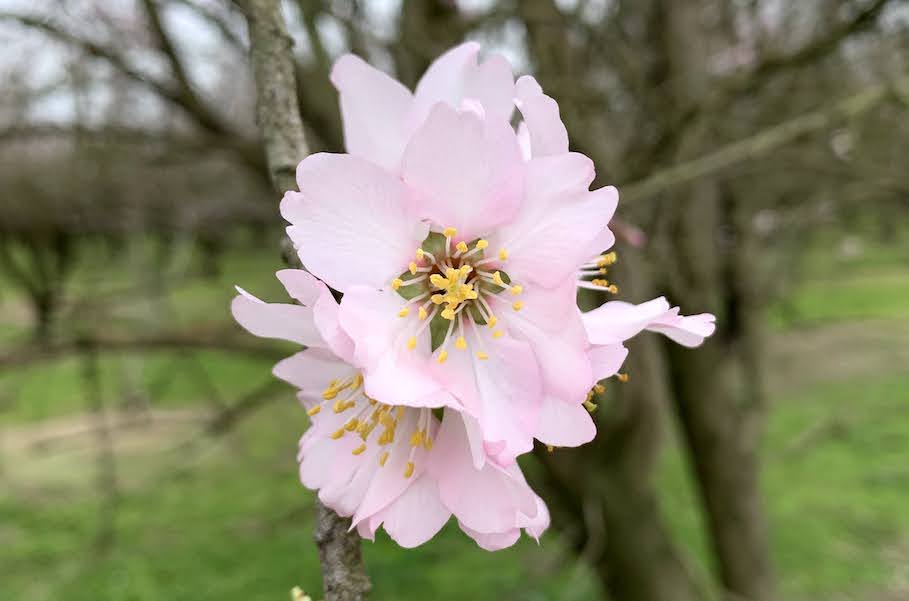Additional information:
- Overall rating for honeydew: 2/5
- Nectar: 2/3
- Pollen: 1/3
- Color: White / Beige
Blooming Almond tree in Bay Area, California:
- February 15, 2025
- February 3, 2024
- February 11, 2022
- February 14, 2021
- February 18, 2020
The flowering of the almond tree is a significant event for beekeepers. Almond trees typically bloom in early spring, providing one of the first sources of pollen and nectar for bees after the winter months. This period is crucial for beekeepers because it marks the beginning of the beekeeping season, allowing honey bees to start building up their strength and increasing their populations.
Importance for Beekeepers
- Early Season Pollination: Almond blossoms offer bees one of the earliest foraging opportunities. This is especially important in regions where winters can deplete bee colonies’ resources.
- Colony Growth: The abundance of almond flowers supports the rapid growth of bee colonies. The nectar and pollen from almond blossoms are rich in nutrients, helping to improve the health and productivity of the bees.
- Pollination Services: Many beekeepers transport their hives to almond orchards to provide pollination services. Almond trees are 100% dependent on bees for pollination, making beekeeping integral to the almond industry. Beekeepers often earn significant income from these pollination contracts, which can support their operations for the rest of the year.
- Environmental Indicators: The timing and health of almond blooming can also serve as an indicator of environmental conditions, which can be crucial for planning beekeeping activities throughout the year.
Challenges
- Pesticide Exposure: Almond orchards, like other agricultural areas, may use pesticides that can harm bees. Beekeepers need to be vigilant and work with growers to minimize exposure.
- Disease and Parasite Management: The congregation of many bee colonies in one area, such as an almond orchard, can increase the spread of diseases and parasites among bees. Beekeepers must manage their colonies carefully to prevent outbreaks.
- Climate Dependence: The timing and success of almond blooming are highly dependent on weather conditions. Unseasonable weather can impact bloom times and the availability of forage for bees, affecting pollination services and honey production.
Best Practices for Beekeepers
- Monitoring and Management: Regularly inspecting hives and monitoring bee health can help identify issues early.
- Collaboration with Farmers: Working closely with almond growers to ensure practices that benefit both the almond crops and the bees, such as careful timing of pesticide application.
- Disease Control: Implementing best practices for disease and parasite control to keep colonies strong.
- Diversity of Forage: After the almond bloom, providing bees with access to a diverse range of forage can help maintain colony health and productivity.
The flowering of the almond tree is a key event that intertwines the cycles of agriculture and apiculture, highlighting the interdependence between plants and pollinators. It underscores the importance of sustainable practices that support both the almond industry and the health of bee populations.

